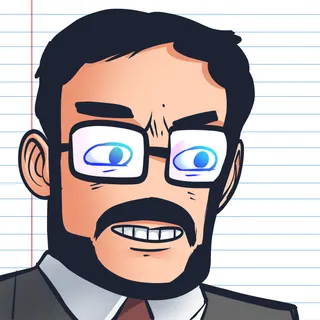AKLEG Day 15: State of the State delayed
Questions about how the governor's preferred education bill would work in practice and whether it meets the needs of Alaska students in a fair and equitable manner have gone unanswered.

Good morning, Alaska! It’s Day 15.
In this edition: The governor’s annual State of the State address was postponed on Monday night, so let’s take a look at how his biggest priority this session—a sweeping overhaul to education policy in Alaska—is playing out, how it mirrors his effort to make the Alaska Constitution voucher friendly and the critical nuance lost in the rush to pass the bill. Also, the reading list and a catch-up on the threads.
Current mood: ☃️
State of the state delayed

The governor’s annual State of the State address to the Legislature was scheduled for Monday night but was delayed because several commissioners and guests couldn’t get into Juneau because of weather problems. It’s been rescheduled for 7 p.m. today.
The speech will come on the heels of comments to the Alaska Chamber of Commerce last week, where Gov. Mike Dunleavy pledged to veto a standalone increase to the base student allocation, the figure in state law used to determine the baseline funding for the public school system. That demand, however, is complicated by the fact that the broader package preferred by the governor — the sweeping education package proposed by House Republicans to create a temporary teacher bonus program, increase funding for homeschooled students and expand charter schools — has already stalled out after House leadership attempted to rush the bill.
It’s important to note the governor’s administration has been closely involved in crafting the legislation, particularly with the proposal to put the creation and oversight of public charter schools in the hands of the state Board of Education (wholly appointed by the governor). Department of Education Commissioner Deena Bishop praised the legislation at the bill’s only hearing since House Republicans stuffed it full of their riders, arguing that traditional public schools simply need to work on their priorities while coping with funding issues.
Still, for all the involvement, answers about how the legislation would work in practice and whether it meets the needs of Alaska students in a fair and equitable manner have gone unanswered. Questions about how the expanded charter school system would be funded, how many charter schools are really waiting in the wings, and whether the state really has the capacity to review, approve and oversee new charter schools have all gone unanswered. The bill only calls for $6,000 in new funding for the charter school provisions, which should give you a good idea about how much oversight is planned.
While the administration has bristled at the suggestions it’s just a backdoor attempt to institute a voucher program to allow public money to flow to private and religious programs, the entire approach has almost precisely mirrored Sen. Mike Dunleavy’s push to alter the Alaska Constitution in 2014. Then, like now, Dunleavy argued that we needed to change the law first, and then we could have a talk about how the program would work.
And then, like now, the bill’s expected appearance on the floor hasn’t come to pass.
More: School voucher bill pulled from Senate floor, avoiding fatal vote
The response, which I would expect to be featured in tonight’s speech, is to frame the questions as outright animosity toward charter schools. It’s a classic us versus them. Public school bureaucracy versus innovation, school choice and parental rights. Others seem to hold up the fact that charter schools are within the public school system and, thus, are public charter schools as some kind of gotcha, akin to dismissing gun control advocates’ concerns when they call a magazine a clip.
Sen. Löki Tobin, the Anchorage Democrat who chairs the Senate Education Committee, took a more nuanced approach to the conversation during a floor speech on Friday. In it, she noted that charter schools can be a powerful force for good but that their success ultimately rests in their connection to the local community, which would be severed under the changes backed by the governor.
“I know that all of these things come with the lens of history, our accurate history. I am the descendant of slaves, and so is my mother, and I know what charter schools and what the defunding of public schools have done to people who look like me. The barriers that they have created. The things that they have done to prohibit folks from learning how to read,” she said. “That needs to be part of the conversation. We need to have discussions—true discussions—about the accurate history that our country has experienced.”
While the House Education Committee has met only once so far this session, the Senate Education Committee has continued to plug away with hearings on student absenteeism, reading intervention, Alaska Native language literacy, and the impact of youth homelessness on educational outcomes. The youth homelessness hearing was a particularly good reminder that not all students are arriving at school on an equal footing, a crucial point given that many public charter schools don’t provide transportation or regular meals.
For many, the public neighborhood schools are, as SchoolHouse Connection Executive Director Barbara Duffield told the Senate Education Committee, “an oasis of stability when everything else in the youth’s life is turned upside down.”
Stay tuned.
The reading list
- Some skepticism as Gov. Mike Dunleavy proposes biggest use of executive power in decades
- Police say they won’t reopen case of Kotzebue woman found dead on mayor’s property
- Bill backed by Southeast communities would tighten hunting and fishing license residency requirements
- Judge orders pro-Dunleavy campaign and its backers to finally answer subpoenas
- Anchorage Mayor ‘Bonson’ goes rogue in Juneau
Follow last week’s threads
The Alaska Memo Newsletter
Join the newsletter to receive the latest updates in your inbox.




